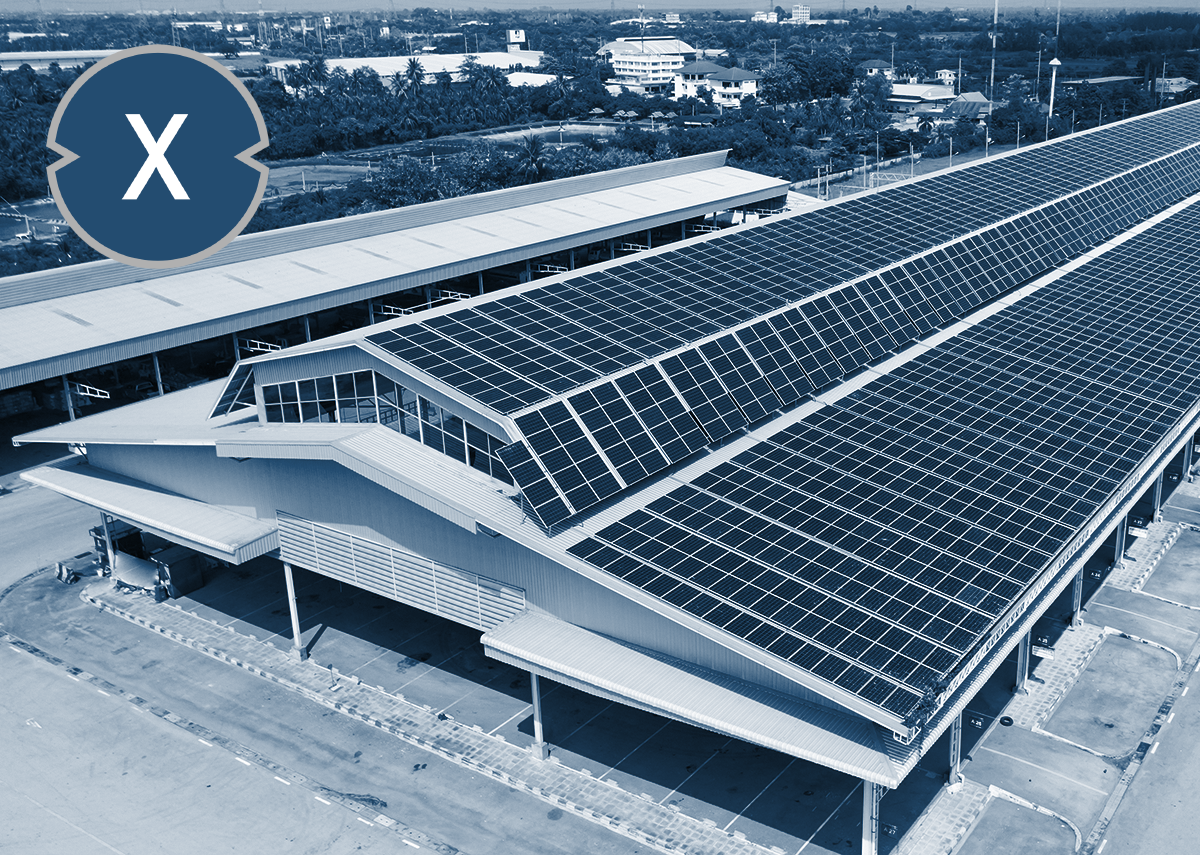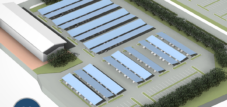A solar system pays off faster the more solar power you use directly. You have to pay much less for electricity from the roof than for energy from the grid. The point at which a photovoltaic system starts working economically depends on several factors. For a single-family home with 4 to 10 kWp, the system will pay for itself after 8 to 12 years. With electricity storage you can add approx. 2 additional years. It is worthwhile for commerce and industry simply because of the CO2 tax and the necessary autonomous power supply .
Add green energy to your life
Solar energy is only part of the solution. Adapting and expanding the infrastructure to use renewable energies is a major challenge, but one that is worth it in the long term for us and future generations. In the future, innovations and ideas will no longer be developed in a conventional way, consciously or unconsciously, based on previous standards, but will always be geared towards energy efficiency and mostly solar energy. Be it in mechanical engineering or in trade. Moving away from everyday products, which are almost all developed and produced on the basis of oil, things will be exactly different in the future. It's not about saving energy, but about dealing sustainably with our environment and energy, which is inexhaustible thanks to the sun.
With over 1,000 specialist articles, we cannot present all topics here. Therefore, you will find a small excerpt from our work here and we would be pleased if we have piqued your interest in getting to know us better:
Plan solar systems with photovoltaic solutions for freight forwarding and contract logistics
The EU's Green Deal is the heart of the new climate protection law and drives developments and measures forward. In some federal states there are already legal provisions for new logistics buildings with photovoltaics mandatory. The solar system requirement for existing logistics buildings and logistics centers will follow. The first announcements about this have already been made in politics, because the EU wants to be the first climate-neutral continent in the world by 2050.
What will be crucial for the future will be how we continue to secure the infrastructure of our key industry! Key industries in Germany today include the automotive industry, construction industry, food, chemical industry, electrical industry, energy production, mechanical engineering and shipyards.
The Corona pandemic in particular has shown that the functioning supply chain management of trade and industry is particularly thanks to the logistical mastery of forwarding companies and contract logistics. The fact that there were “only” shortages like in the “toilet paper crisis” will remain just a humorous side note in the future.
More about it here:
Photovoltaics is outperforming traditional power plants
The importance of photovoltaics for local electricity generation is increasing unabated. An analysis by the Fraunhofer Institute just showed that solar and wind energy shared the top spot in net electricity generation in Germany for the first time in June. Accordingly, photovoltaic systems contributed 7.04 terawatt hours (TW) to electricity generation in this country.
This put them just behind wind turbines, which came in at 7.09. In comparison, gas power plants (6.5 TW) and brown coal power plants (6.4 TW) performed significantly worse. The share of 18.3 percent for photovoltaics clearly shows why many people rightly see it as the preferred technology for the energy transition.
More about it here:
The sun gold of 68 terawatt hours in North Rhine-Westphalia
Across Germany, around one in ten terawatt hours of electricity comes from renewable energies from North Rhine-Westphalia, according to the State Office for Nature, Environment and Consumer Protection (LANUV).
With over 288,000 systems for generating renewable energies and an electricity volume of 23.3 terawatt hours, over 16 percent of the electricity consumption in North Rhine-Westphalia was provided by renewable energies in 2019. With this amount alone, Bremen, Hamburg and Mecklenburg-Western Pomerania could be completely supplied with electricity.
68 terawatt hours of solar power were calculated on the approximately eleven million roofs in North Rhine-Westphalia. So far, around 4 terawatt hours have been realized and therefore only around three percent of the current electricity consumption in North Rhine-Westphalia.
Densely populated regions such as Cologne, Düsseldorf and the Ruhr area offer particularly great solar power potential. If all potential is implemented, savings of around 30 million tons of CO2 could be achieved. This corresponds to around ten percent of North Rhine-Westphalia's current greenhouse gas inventory.
The largest expansion, with around 470 megawatts of installed capacity, was recorded last year in the area of photovoltaics. This is the fourth year in a row that photovoltaics has exceeded the previous year's expansion.
More about it here:
Solar carports as the key component in e-mobility?
Convert company parking spaces or shopping centers to solar carports - Image: Xpert.Digital / PATSUDA PARAMEE|Shutterstock.com
Now everything should happen very quickly: the turnaround in mobility. The way we move. For decades it was said that oil reserves were becoming scarce and would not last much longer. There was always talk of 40, 50 to 100 years. Nevertheless, not much happened here in terms of traffic policy, because there was apparently still plenty of fuel coming from the pump at the gas station. It is all the more astonishing that this argument is no longer brought up. Actually, it was always clear to us that our current form of transportation with combustion engines needed an alternative. That we can no longer continue like this in the long term, regardless of the environmental impact of our beloved gasoline and diesel vehicles. Electromobility is still in its infancy. She still has many flaws. But it also cannot rely on decades of development like with combustion engines, where improvements and optimizations have constantly gone hand in hand, from exhaust gases to consumption. Apart from Dieselgate, the diesel and emissions scandal.
More about it here:
📣 Solar solutions for industry, retail and municipalities
Everything from a single source, specifically tailored to your solar solution. You refinance or counterfinance into the future with your own electricity generation.
🎯 For solar engineers, plumbers, electricians and roofers
Advice and planning including a non-binding cost estimate. We bring you together with strong photovoltaic partners.
👨🏻 👩🏻 👴🏻 👵🏻 For private households
We are positioned across regions in German-speaking countries. We have reliable partners who advise you and implement your wishes.
📊 Photovoltaic planning tool and solar configurator for roof and outdoor areas 💬
Solar parks – gains for biological diversity
A study commissioned by the Federal Association of the New Energy Industry (bne) comes to the conclusion that solar parks have a positive effect on biodiversity.
The aim of the study was to show whether and to what extent solar parks can contribute to floristic and faunal biodiversity.
For this purpose, documents on the vegetation and fauna of 75 solar parks in Germany were evaluated. However, the studies and investigations available for the parks, which are spread across 9 federal states, were mostly carried out during the parks' approval phases and are very heterogeneous. Nevertheless, documents from almost 40% of the solar parks eligible for the assessment could be used. Intensive studies are also available for some parks, some comparing the federal states before and after, so that meaningful conclusions can be drawn. From this it can be deduced that solar parks generally have a positive effect on biodiversity and which structures can contribute to increasing biodiversity, especially with regard to the distance between the rows of modules and maintaining the distances between the rows.
More about it here:
EU: Waste incineration is renewable energy
A group of NGOs and companies from the recycling, forestry and chemical industries are calling for the burning of non-recyclable waste to generate energy to no longer be considered renewable energy.
Non-renewable energy can only be used once. It is limited and not available at will. This also includes nuclear power. Nuclear power plants require enriched uranium, which must first be produced industrially. Depleted uranium is produced as a waste product. What happens to this and to the fission products caused by nuclear fission, i.e. highly toxic radioactive waste, is a different topic. On the other hand, fossil fuels cause environmental pollution and global warming by releasing greenhouse gases.
Until then, everything is logically understandable: renewable energy is freely available and does not harm the environment.
More about it here:
2019: In Germany the electricity mix is 47% renewable
According to Fraunhofer Institute for Solar Energy Systems, 47 percent of the electricity generated in Germany will come from renewable sources in the current year. Up to and including mid-July, wind and solar systems in Germany produced almost 100 terawatt hours (TWH) electricity. For comparison: With brown and hard coal it was 84 TWh. According to a report by the Handelsblatt, the proportion of coal -fired power plants in German electricity generation in the first half of the year has surprisingly dropped. "Wind, solar and even gas systems displaced hard coal power plants on a large scale from the market, but increasingly also brown coal systems."
More about it here:
- Plan photovoltaics for warehouses, commercial halls and industrial halls
- Industrial plant: Plan a photovoltaic open-air system or open-space system
- Plan solar systems with photovoltaic solutions for freight forwarding and contract logistics
- B2B solar systems and photovoltaic solutions & advice
Xpert.Solar for advice and planning of solar solutions, solar systems, solar fences, for balcony solar or solar open-space systems in Ulm, Neu-Ulm, Stuttgart and Augsburg
I would be happy to serve as your personal advisor.
You can contact me by filling out the contact form below or simply call me on +49 89 89 674 804 .
I'm looking forward to our joint project.
Xpert.Digital – Konrad Wolfenstein
Xpert.Digital is a hub for industry with a focus on digitalization, mechanical engineering, logistics/intralogistics and photovoltaics.
With our 360° business development solution, we support well-known companies from new business to after sales.
Market intelligence, smarketing, marketing automation, content development, PR, mail campaigns, personalized social media and lead nurturing are part of our digital tools.
You can find out more at: www.xpert.digital – www.xpert.solar – www.xpert.plus


